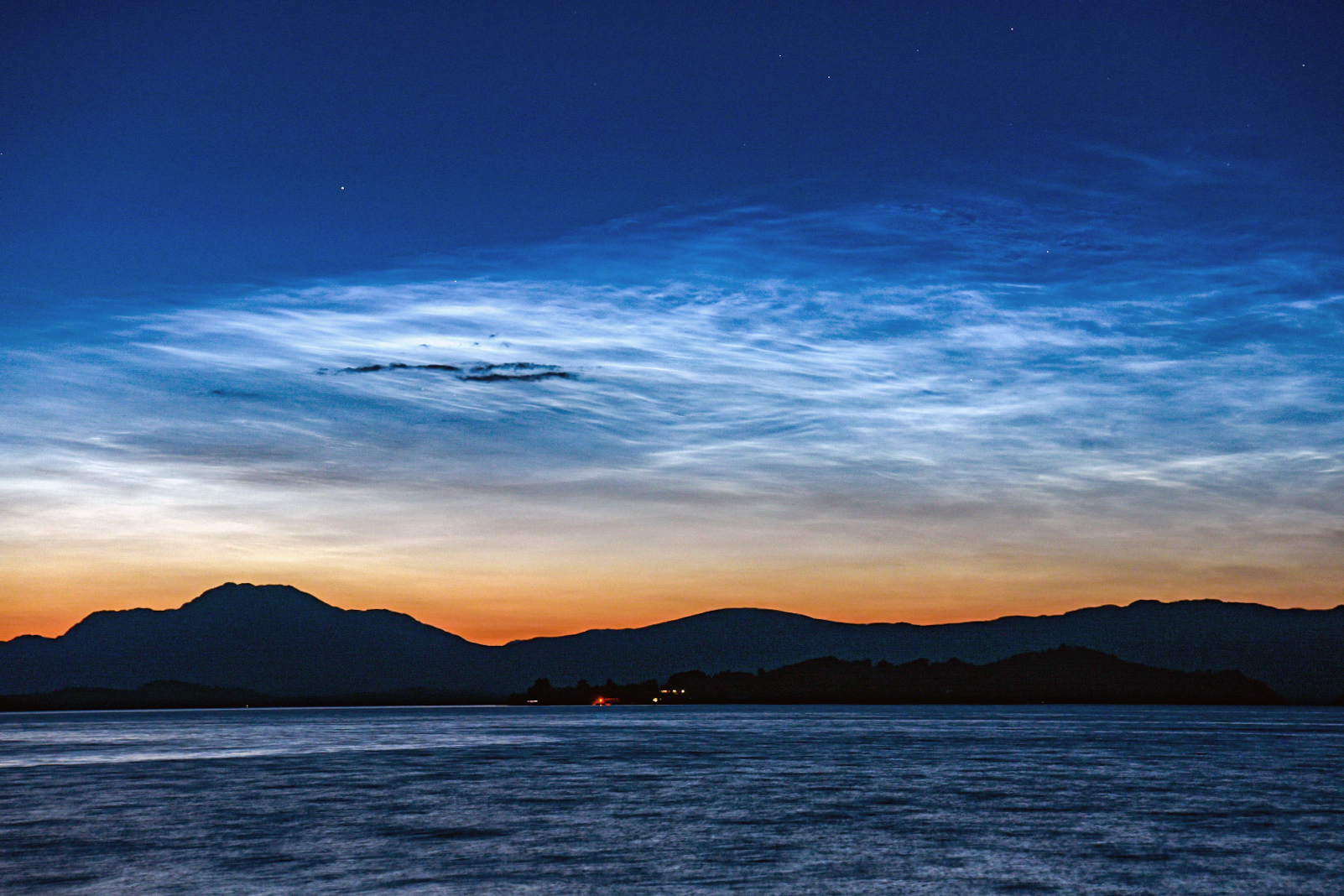Noctilucent cloud over Britain & Western Europe, 2023
2024 June 9
Noctilucent cloud forms in the mesosphere at an altitude of about 83 km and appears annually in northern latitudes between the end of May and the beginning of August. A number of observers, situated at widely dispersed locations in the UK and Western Europe, report their sightings to the British Astronomical Association. This paper includes an analysis of these observations for the summer months of 2023, together with background information about the conditions in the mesosphere which contribute to the formation of polar mesospheric ice: the cause of ground-based sightings of noctilucent cloud.
Introduction
Noctilucent clouds (NLC) are formed by ice crystals in the upper mesosphere at an altitude of around 85 km. In the northern hemisphere, they usually appear in late May and last until the middle of August. Because of the altitude at which they form, where air density is very low, they are quite tenuous and so can only be seen from surface locations when contrast is sufficiently good. In order to attain the level of contrast required, the Sun must have set and be between six and 16 degrees below the horizon.

Since 2007, when NASA launched their Aeronomy of Ice in the Mesosphere (AIM) satellite, ground-based observers had some idea as to when ice first appeared in the mesosphere at the start of the NLC season. This was indicated on images taken by the Cloud Imaging & Particle Size (CIPS) instrument on board AIM; the first CIPS detections were usually followed a few days later by ground-based sightings. A message on 2023 May 10 from Cora Randall, Professor of Atmospheric Physics at the University of Colorado Boulder, indicated problems with AIM, saying, ‘Unfortunately, AIM is not currently operational, and we do not expect any CIPS images for the northern 2023 season. It is possible that we’ll be able to resume operations again in 2024.’1 This meant that ground-based observers would have to, as prior to 2008, resort to visual sightings as the first detections of NLC.
Over the past few years, the author has received data from the Microwave Limb Sounder instrument on board the Aura satellite, which records mesospheric temperature and water-vapour content. These are provided by Dr Lynn Harvey, Research Scientist at the University of Colorado Boulder. An approach to Dr Harvey in early May provided data up until mid-May and came with the comment that ‘Conditions are warm and dry compared to most other years since 2007. This is true at all NS [northern hemisphere] polar latitudes. Based on these results I predict a late PMC [polar mesospheric cloud] season onset date’.2
Another possible way of identifying ice crystals in the mesosphere was found by the Ozone Mapping & Profiler Suite (OMPS) Limb Profiler (LP) instrument, on board the National Oceanic & Atmospheric Administration’s NOAA-21 satellite. This instrument works by measuring scattered light from ice crystals, which was first recorded on May 26. This is the average date when NLC have first been seen by ground-based observers since 2006, but in 2023 it was eight days after the first ice detection by NOAA-21 that the first report of NLC arrived from the UK and Europe.
Members can view the full illustrated article in PDF format by returning to the previous page. Not a member? Why not join today?
| The British Astronomical Association supports amateur astronomers around the UK and the rest of the world. Find out more about the BAA or join us. |
